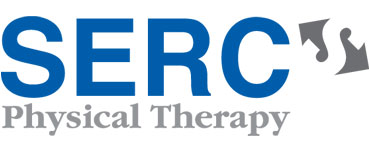Learn More About Pre/Post Surgery Therapy
Physical therapy is typically required following an orthopedic surgery such as operations on the hip, knee, shoulder, wrist, hand, neck, foot, ankle, and spine to facilitate a speedy recovery. Physical therapy can start anywhere from a few hours to a few days after surgery and in some cases there may be a period of immobilization following surgery.
Also, while most of us are familiar with a comprehensive post-surgical rehabilitation program, many of us are not aware of the benefits of a structured pre-surgical or “pre-habilitation” program. This is a program designed by your physical therapist to help you prior to surgery so that you can have a great outcome after surgery.
Benefits of Pre/Post-Surgical Physical Therapy
Pre-Surgical Physical Therapy
The goals of a pre-surgical program are as follows:
- Mentally prepare for surgery
- Reduce pain and inflammation
- Restore range of motion
- Improve muscular control of the injured joint
- Normalize movement patterns prior to your surgery
- Improve overall well-being and fitness
- Gain a good understanding of the exercises that you will perform immediately after surgery
Post-Surgical Physical Therapy
Physical therapist are trained to optimize your recovery and prevent re-injury during the rehabilitation process. Treatment focuses on:
- Reduced swelling
- Regaining range of motion
- Regaining lost strength
- Increased endurance
- Returning to daily activities
How We Treat Patients Pre/Post-Surgery
After a thorough evaluation by a physical therapist, goals will be set to minimize the adverse effects of surgery such as pain and swelling as well as to restore normal movement, flexibility and function. The therapist and patient will work together to establish functional goals related to resuming normal activities of living as well as preventing an injury from recurring. The therapist will then design an exercise program tailored specific to the patient’s needs and abilities, and work.
Therapy is often divided into distinct phases. The first comes immediately after surgery when the body part may be immobilized while pain and swelling subside. Then comes a series of progressively challenging exercises to restore range of motion, stability, and strength. The final goal is to return the patient to a pre-injury activity level. Post-operative treatments may specifically include:
- Flexibility exercises to improve range of motion
- Modalities such as ice, heat, and electrical stimulation
- Exercises to strengthen muscles
- Posture, balance, and coordination training
- Gait analysis and training
- Manual therapy techniques
- Self-care training
- Home exercise instruction
What to Expect
Every patient has a unique health history, diagnosis and personal goals. When you come for your first appointment, we will create a personalized treatment plan for you.
We work with most major insurance providers and do our best to help keep the paperwork pain-free. If you’d like to confirm your insurance coverage, please let us know and we can verify when you schedule. If your insurance provider requires a co-pay, we will ask for this payment at each visit. We accept payments by cash, check or credit card.
When to Arrive
On average, a patient’s first visit lasts about an hour. We typically ask patients to arrive 15 minutes early to sign-in, complete paperwork and/or change clothes.
What to Bring
On your first visit, you’ll need to bring your physician referral or prescription (if needed), your insurance card, your primary registration forms, your ID or driver’s license and your co-payment (as applicable). If desired, you may bring a change of clothing.
How it Works
During your first visit, your physical therapist will do an initial evaluation and discuss your plan of care. The therapist uses this information to set goals for your continued treatment. Physical therapy goals may include improved movement, strength, endurance and flexibility, as well as decreased pain. Your subsequent visits will focus on treatment that is based on your diagnosis and individualized goals.

